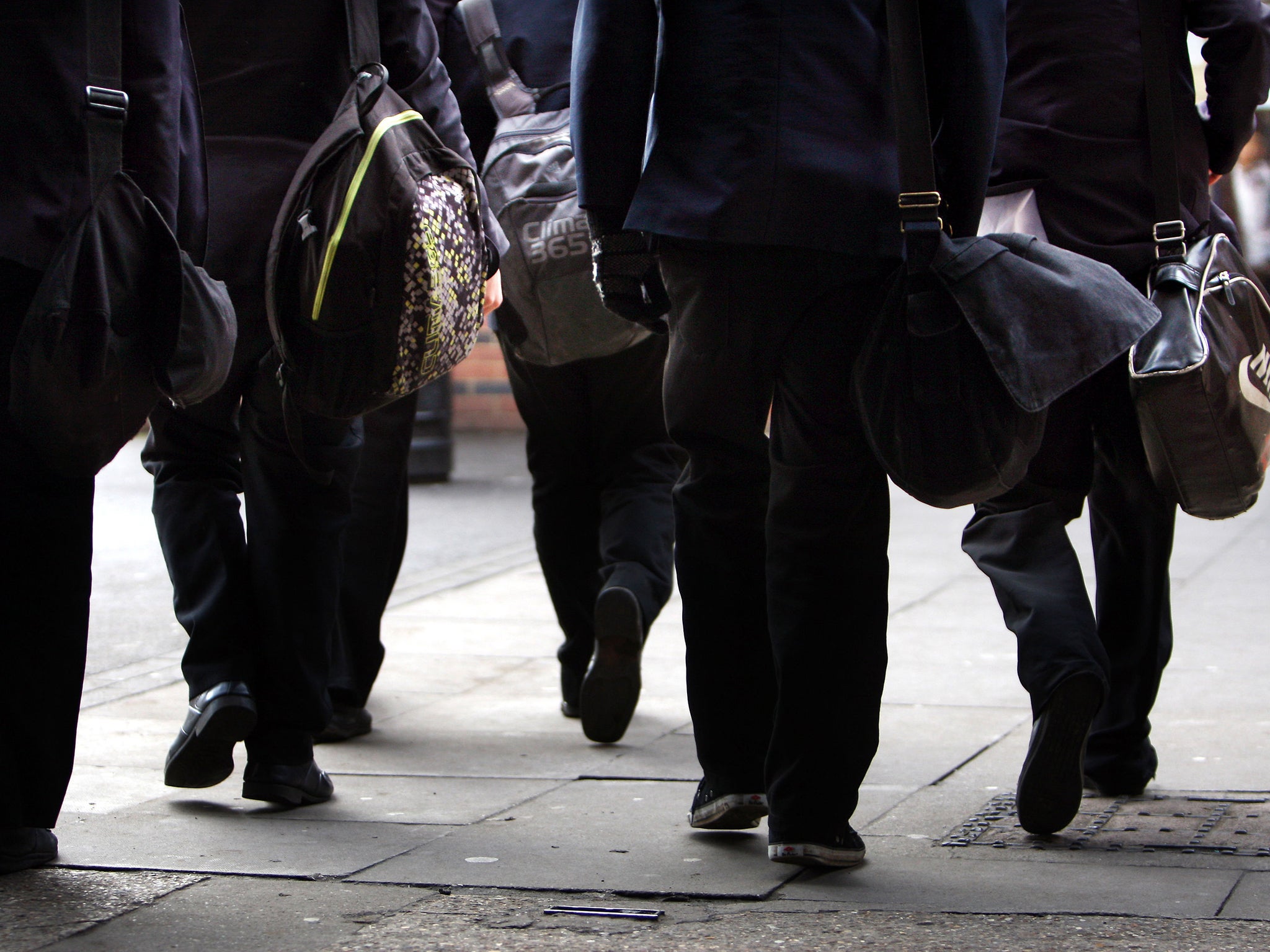National Offer Day 2020: Number of families denied first preference could increase, headteachers warn
Nearly half of pupils miss out on preferred schools in some London boroughs

The number of children being denied their first choice secondary school is likely to increase, headteachers have warned.
Hundreds of thousands of families in England were told whether their child had secured a place in their preferred secondary school on National Offer Day on Monday.
But school leaders have warned that more children could miss out this year as an increase in pupil numbers continues to make its way into secondary schools.
Last year, nearly one in five (19.1 per cent) children did not get their first choice of secondary school – which was a 10-year high. Almost 115,500 pupils did not get into their preferred school.
Geoff Barton, general secretary of the Association of School and College Leaders (ASCL), said there will be families this year who will be “disappointed”.
He said: “Last year, the number of families denied their first preference increased, and it may do so again this year, as rising births since 2002 continue to move into secondary level.”
Mr Barton said the situation will “intensify” as many families continue to apply for oversubscribed popular schools and pupil numbers continue to increase in the secondary phase.
“The situation is particularly iniquitous for disadvantaged families who do not have the spending power to buy or rent houses in the catchment area of these schools,” he said.
The official figures on the allocation of secondary school places across England will not be released until the summer, but some councils have reported a rise in applications.
In Kent, more than 22 per cent of pupils missed out on their first preference school this year – a rise on last year – following a surge in demand.
Meanwhile, in some London boroughs almost half of children missed out on their number one choices. In Hammersmith and Fulham, 47 per cent failed to get into their first choice and in Lambeth nearly 40 per cent of pupils did not secure their preferred school.
Figures from the Pan London Admissions Board show 32 per cent of children across the capital failed to get their first choice.
In Birmingham, 26.5 per cent of pupils missed out on their first choice of secondary school. And in Bristol, 24 per cent of children were not given their preferred place.
A survey by PA suggests a greater proportion of pupils are getting their first choice, but their chances vary depending on where they live.
Of the 23 authorities that provided an early response, 17 showed an increase in the proportion of pupils who got their first choice. Five saw a drop and one showed no change.
Figures for Bath and North East Somerset show 90 per cent got their top pick, up from 88 per cent. But in Hartlepool 91.7 per cent of pupils got their top choice, which was down from 93 per cent.
Paul Whiteman, general secretary of school leaders’ union NAHT, said: “Choosing the right school and securing a place there can feel like a battle for parents. The problem is that in an increasingly fragmented school system we lack a coordinated approach to place planning.
“Local authorities are responsible for ensuring sufficient school places, but the powers and resources necessary for them to do so have been removed. Instead planning is haphazard; decisions are being made in isolation and new schools and new school places are not always being commissioned in the areas they are most needed.”
He added: “Until the government creates a national strategy to guarantee there are enough school places for every child in England, the annual anxious wait for families will continue.”
Teresa Heritage, vice chair of the Local Government Association’s (LGA) children and young people board, said: “Councils have continued to respond to the ever-increasing demand by helping to create an extra 37,000 secondary school places back in 2018.
”However, with two-thirds of secondary schools now academies, it is becoming increasingly difficult to keep up with demand. Councils have a legal duty to ensure capacity but currently have no powers to open new secondary schools or direct academies to expand. This ruling needs to be amended as soon as possible to ensure as many children as possible get the places they want.”
The government’s figures show that England’s secondary school population is expected to hit 3.3 million in 2027 – 418,000 higher than in 2018 – to meet a 14.7 percent rise in secondary pupil numbers.
Nick Gibb, school standards minister, said: “Last year more than nine in ten pupils received a place at one of their top three preferences of secondary school, with the majority offered their top preference.
“Pupils are also significantly more likely to be receiving a place at a good school than they were 10 years ago – with 86 per cent of schools rated good or outstanding now compared to 68 per cent in 2010.
“Delivering good school places is a priority for this government and we are on track to create one million between 2010 and 2020, the largest increase in at least two generations, and we use councils’ own population forecasts to make sure these places are provided where they are needed.”
Subscribe to Independent Premium to bookmark this article
Want to bookmark your favourite articles and stories to read or reference later? Start your Independent Premium subscription today.

Join our commenting forum
Join thought-provoking conversations, follow other Independent readers and see their replies